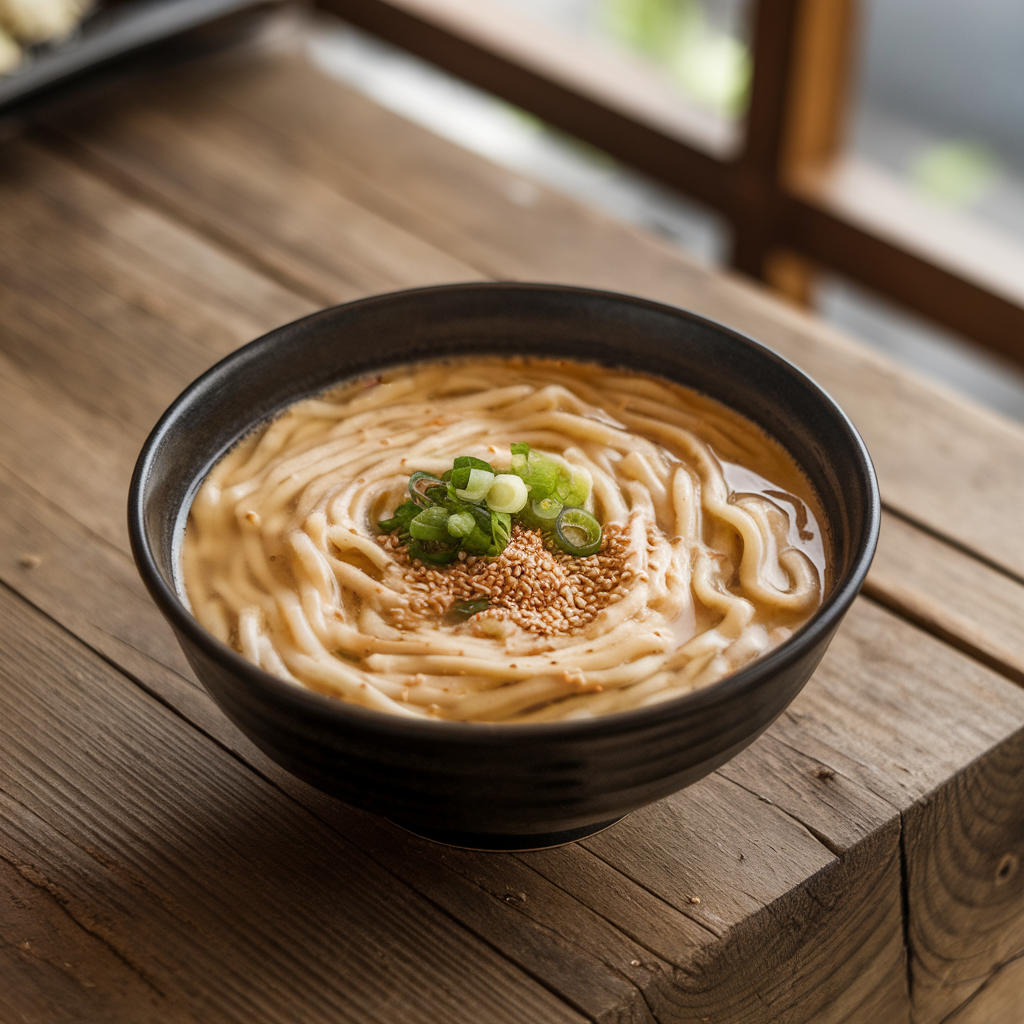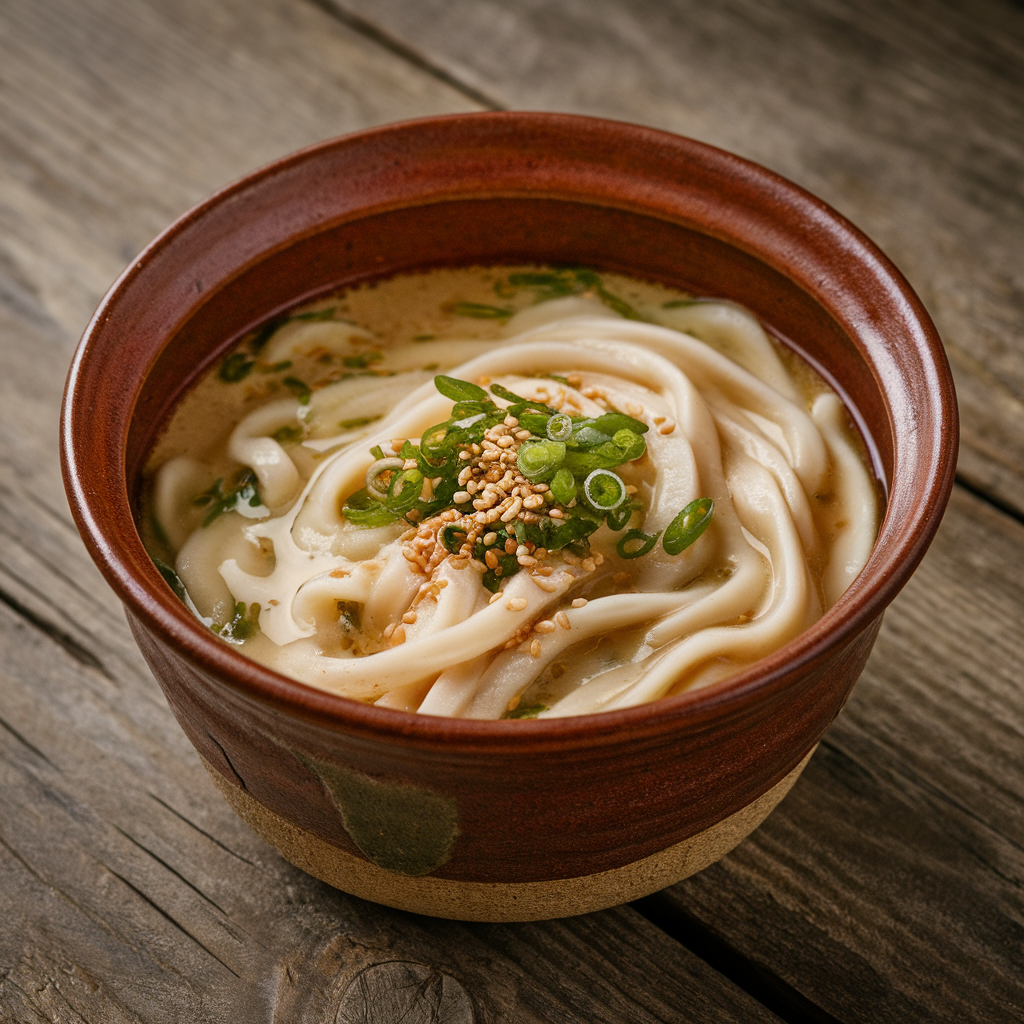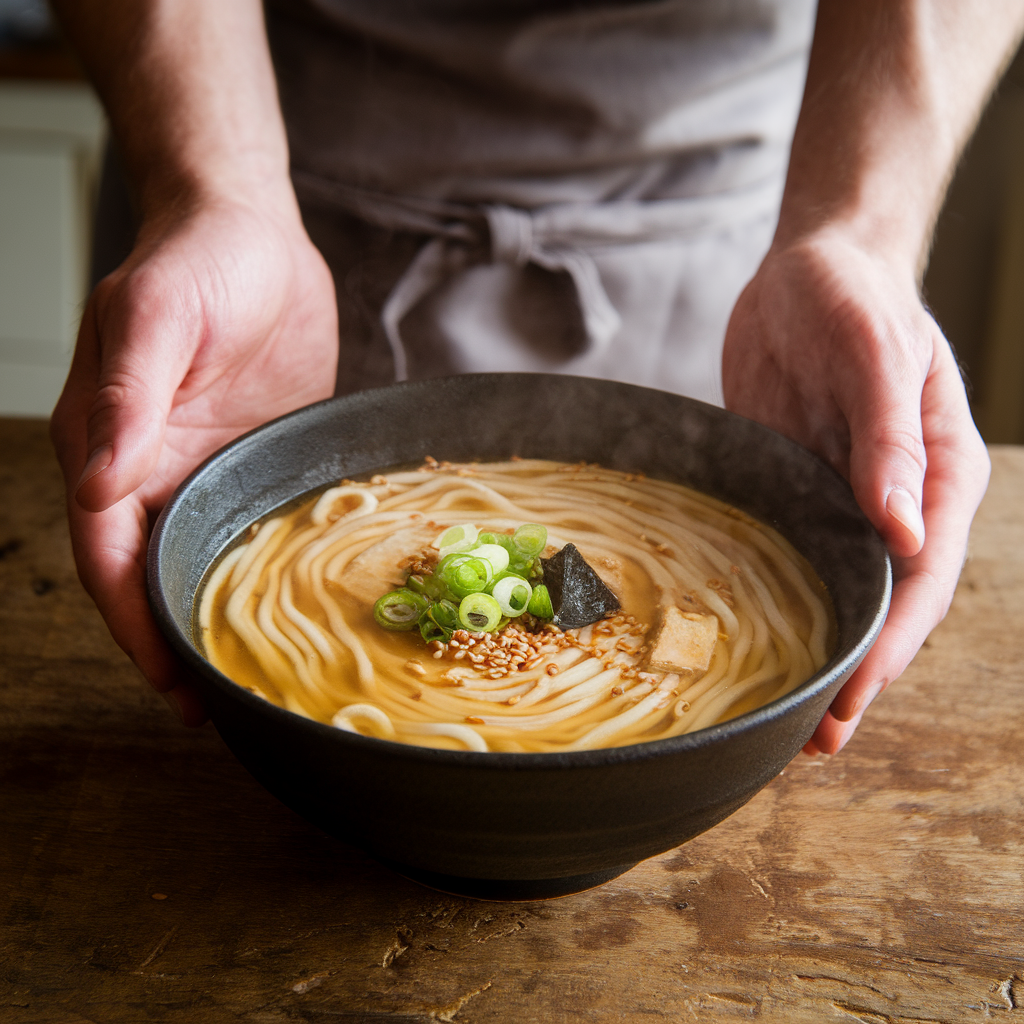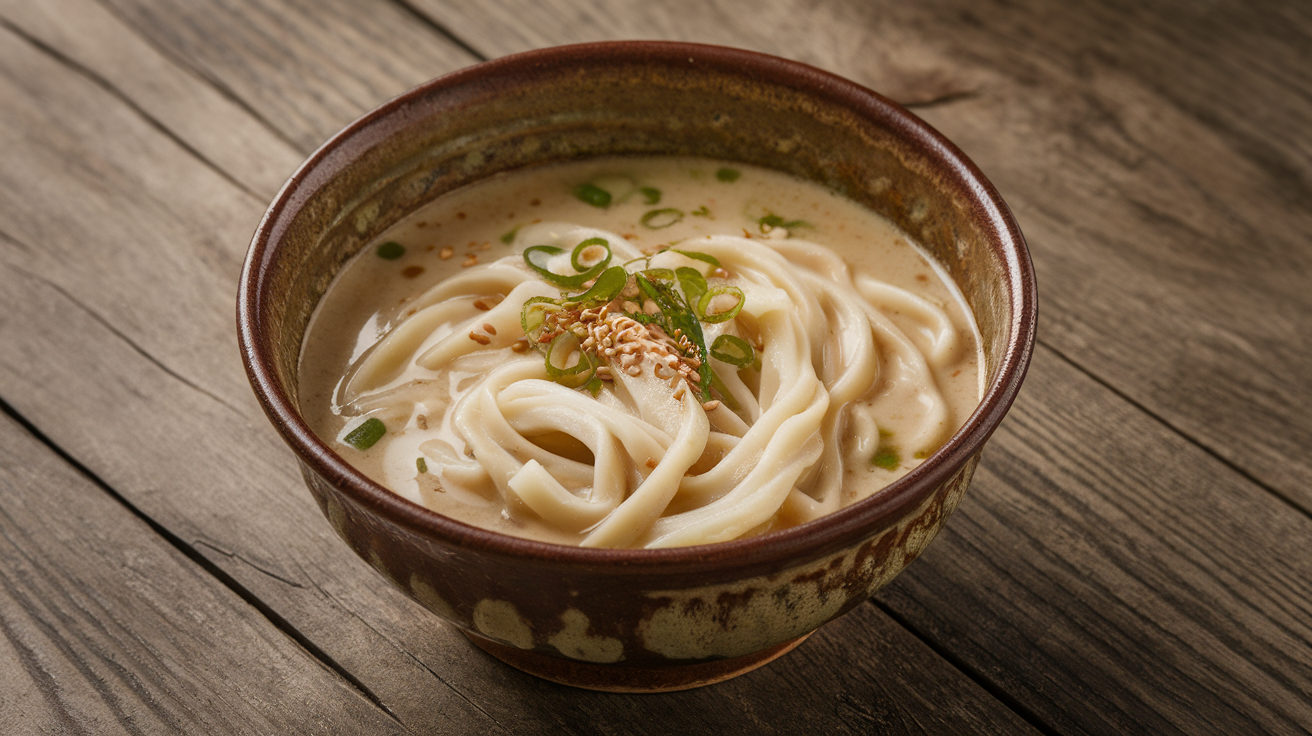When summer heat kicks in or when you simply crave something light, refreshing, yet deeply flavorful, nothing hits the spot quite like a bowl of cold somen noodles swimming in a rich, creamy sesame miso broth. This recipe blends the delicate texture of somen noodles with the umami-packed sweetness of white miso and the nutty decadence of tahini, elevated by the spicy warmth of fresh ginger. It’s a perfect harmony of tastes and textures that can refresh and satisfy any palate.
This article unpacks everything you need to know to master this elegant and nourishing dish—from ingredient essentials to cultural background, step-by-step instructions, health benefits, and advanced tips for customization. If you’re looking for a standout in the world of somen noodles recipes, or want to explore creative white miso recipes, this is your kitchen guide.
What Are Somen Noodles and Why Are They Special?
Somen noodles are a staple of Japanese cuisine, especially cherished during hot weather. These ultra-thin wheat noodles (usually around 1.3 mm in diameter) are traditionally served chilled to cool off the body and invigorate the senses. Unlike thicker noodles such as udon or soba, somen’s delicate nature means they cook quickly and have a tender, almost melt-in-your-mouth texture.
Historically, somen noodles have been enjoyed in Japan since the Heian period (794–1185), where they were considered a luxury item. Today, they remain a beloved summer food in Japan, often dipped in cold soy-based sauce called mentsuyu. But innovation has brought many variations, including pairing them with creamy, savory broths like our creamy sesame miso soup.
The Umami Power of White Miso: A Staple in Japanese Cooking
Miso paste is a fermented soybean product that brings rich, complex umami flavors to countless dishes. Among its varieties, white miso (shiro miso) stands out for its mild, sweet, and subtle taste. It’s less salty and aged for a shorter time compared to red or brown miso, making it a fantastic base for creamy soups where you want to highlight nuanced flavor layers without overpowering the palate.
White miso is incredibly versatile — from dressings and marinades to soups and glazes — and works perfectly with sesame paste to create a silky broth with depth and sweetness.
The Sesame Factor: Why Tahini Elevates This Soup
Tahini, a creamy paste made from ground sesame seeds, is common in Middle Eastern cuisine but has found its way beautifully into this fusion tahini soup concept. Adding tahini to miso broth gives the soup body, creaminess, and a toasty, nutty aroma that enhances the soup’s umami character.
Sesame seeds and their oils also bring healthy fats, calcium, and antioxidants, which boost the soup’s nutrition while giving it that luxurious mouthfeel you want in a comfort food.

The Zesty Kick of Fresh Ginger
Ginger is a powerhouse ingredient with a peppery, slightly sweet flavor and warming heat. Freshly grated ginger adds brightness and zing to balance the rich creaminess of tahini and the sweetness of white miso. It also brings anti-inflammatory and digestive benefits, making this ginger miso soup not only tasty but good for your gut and overall health.
Building the Perfect Broth: Dashi or Vegetable Stock?
Traditional Japanese soups use dashi, a clear broth made from kombu (seaweed) and bonito flakes (dried fish), prized for its delicate umami flavor. Using dashi in this recipe adds authenticity and a subtle oceanic depth that pairs well with miso and noodles.
For vegetarians or vegans, high-quality vegetable broth is a great substitute. You can boost its umami by adding dried shiitake mushrooms or kombu to infuse similar flavor notes.
Step-by-Step: Mastering This Somen Noodle Recipe
Step 1: Preparing the Noodles
The key to perfect cold somen noodles is cooking them just right—al dente but tender, never mushy. Boil in plenty of water for 2-3 minutes, then drain and rinse under cold water to stop the cooking process and wash off excess starch, which helps keep them from sticking.
To maximize that refreshing chill factor, keep the noodles submerged in an ice water bath until serving. This tightens their texture and delivers the perfect cold bite.
Step 2: Crafting the Creamy Sesame Miso Broth
While the noodles chill, turn to the broth:
- Warm your dashi or vegetable stock gently on low heat.
- Add a generous tablespoon of freshly grated ginger and allow the broth to infuse for 5 minutes.
- Remove from heat and whisk in white miso paste carefully. Dissolving miso in a small amount of warm broth before adding to the pot avoids clumps.
- Incorporate tahini slowly until fully blended, giving the broth a creamy, velvety texture.
- Add a splash of soy sauce or tamari to deepen the savory notes.
- Brighten the broth with a teaspoon of rice vinegar, balancing richness with acidity.
- Finish with a drizzle of toasted sesame oil for aroma.
Let the broth cool to room temperature or chill it before serving for a refreshing cold noodle soup experience.

Step 3: Garnishing for Flavor and Texture Contrast
Somen noodles are subtle, so thoughtful garnishes make all the difference:
- Thinly sliced scallions add a fresh bite and color.
- Toasted sesame seeds provide crunch and boost the sesame flavor.
- Cucumber ribbons or matchstick carrots add crispness.
- Nori strips (seaweed) give an oceanic umami boost.
- For protein, try silken tofu cubes, soft-boiled eggs, or even lightly seared shrimp.
Step 4: Assembling the Bowl
Portion chilled noodles into bowls. Pour the creamy sesame miso broth over the noodles (cold or warm as you prefer). Top with your favorite garnishes and serve immediately.
Why This Cold Somen Noodle Recipe Works: Flavor and Texture Dynamics
- O cold somen noodles are tender yet firm, refreshing in texture.
- O creamy sesame miso soup base wraps the noodles in umami, mild sweetness, and nuttiness.
- O gengibre cuts through with brightness and gentle spice.
- Fresh, crunchy garnishes create contrast to the silky noodles and broth.
- This dish balances comfort and lightness perfectly—rich but not heavy.
Health Benefits of Somen Noodles in Creamy Sesame Miso Soup
This dish isn’t just a flavor powerhouse—it packs a nutritional punch:
- Miso is rich in probiotics, which support gut health and digestion.
- Sesame seeds/tahini offer calcium, magnesium, iron, and healthy fats.
- Gengibre has anti-inflammatory, immune-boosting, and digestive properties.
- Somen noodles, made from wheat flour, provide carbohydrates for energy without weighing you down.
- The fresh vegetable garnishes add fiber and vitamins.
Perfect for a light lunch or dinner that nourishes body and soul.
Variations to Elevate Your Miso Noodles Experience
Make It Vegan or Vegetarian
Simply ensure your stock is plant-based, use tamari instead of soy sauce if gluten sensitivity is an issue, and add tofu or edamame for protein.
Add Protein Boost
Shredded chicken, poached eggs, grilled shrimp, or tempeh make great additions if you want more substantial fare.
Spice It Up
For lovers of heat, add chili oil, freshly sliced chili, or a sprinkle of red pepper flakes to the broth.
Swap Your Noodles
While somen is ideal for its texture and tradition, try this broth with udon, soba, or rice noodles for a different noodle soup experience.
How to Store and Reheat Leftovers
Keep broth and noodles separate in airtight containers in the fridge. The broth can be gently reheated on the stove or served chilled. Noodles hold well in cold water for a day but tend to clump if left too long.

Cultural Insights: The Role of Somen and Miso in Japanese Cuisine
In Japan, somen noodles are synonymous with summer—served cold to help cool the body during hot months. Special events, like the Nagashi Somen (flowing somen), showcase noodles served in cold water running through bamboo flumes, emphasizing the refreshing experience.
Miso soup is a daily staple in Japanese households and is known for its health benefits and comforting qualities. Incorporating sesame paste into miso broth is a modern twist that reflects the evolution of traditional cuisine as chefs and home cooks experiment with fusion flavors.
Perguntas Frequentes
Can I prepare this recipe ahead of time?
Yes, you can prepare the broth a day in advance and keep chilled. Cooked somen noodles can be stored in cold water for up to a day but are best fresh for texture.
What’s the difference between white miso and other miso types?
White miso is milder, sweeter, and aged for a shorter time compared to red or brown miso, which have stronger, saltier flavors.
Are somen noodles gluten-free?
No, somen noodles are wheat-based and not gluten-free. For gluten-free alternatives, consider rice noodles.
How do I prevent somen noodles from sticking?
Rinse immediately after cooking under cold running water and keep them in an ice water bath. Stir occasionally if storing for some time.
Where to Buy Key Ingredients
- Somen noodles: Available in Asian grocery stores or online.
- White miso paste: Find in refrigerated sections of Asian markets.
- Tahini: Commonly sold in supermarkets, Middle Eastern or health food stores.
- Dashi stock: Can be bought as granules or made from kombu and bonito flakes.
- Fresh ginger, scallions, sesame oil: Available in most supermarkets.
Final Thoughts: Why You Should Try This Cold Noodle Soup Today
In a world of heavy meals and complex flavor bomb recipes, Somen Noodles in Creamy Sesame Miso Soup offers a breath of fresh air—a dish that’s simple, elegant, and nourishing. It’s proof that with a few quality ingredients and thoughtful technique, you can transform humble noodles into a memorable culinary experience.
Whether you’re a fan of traditional Japanese dishes or love experimenting with fusion recipes like this tahini soup with Asian flair, this dish will soon become your favorite quick, healthy, and delicious meal.
Try it, share it, and savor every silky, refreshing bite. Your taste buds (and your body) will thank you. 🍜✨


